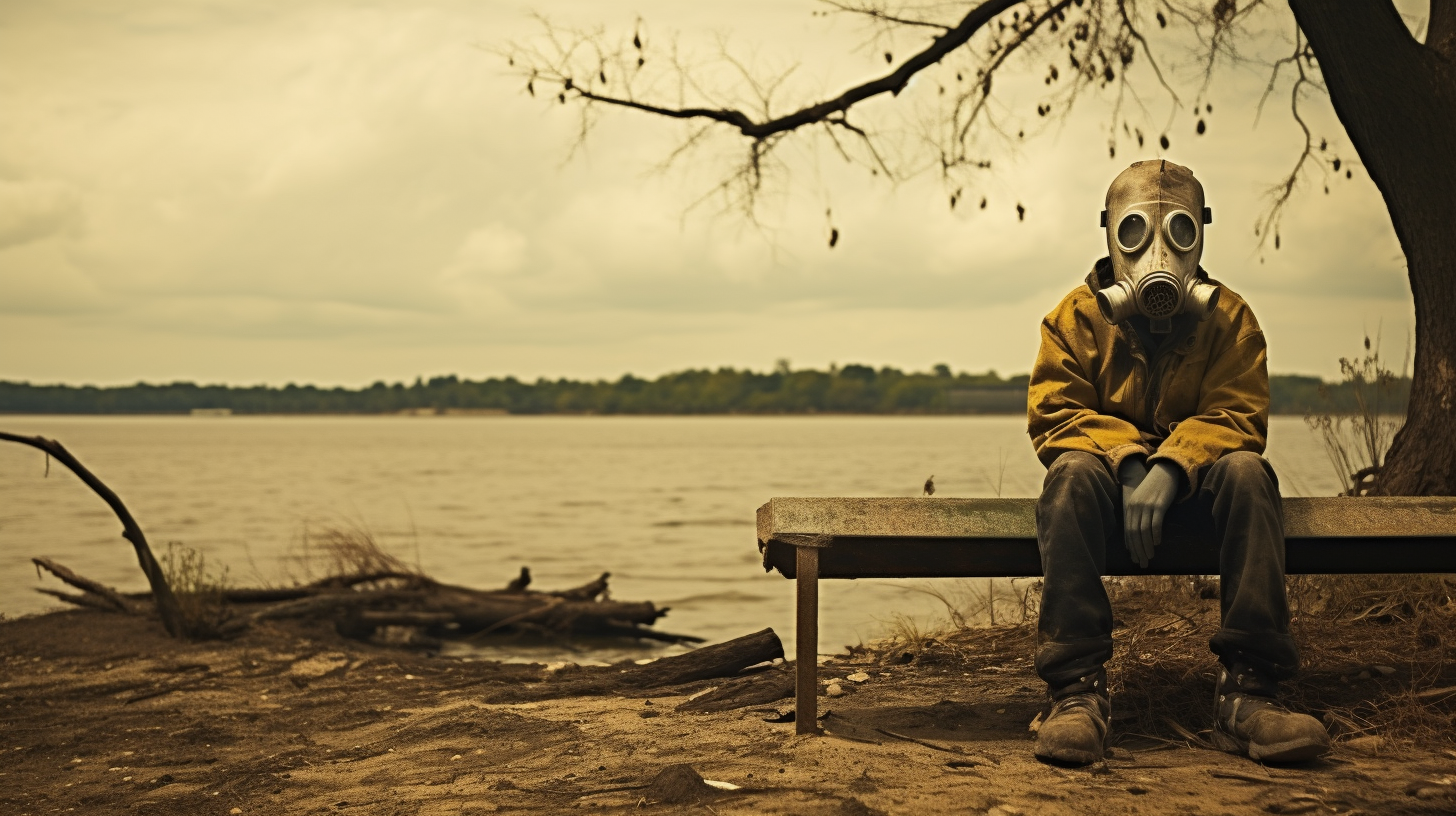The skies were clearer once, speaking of a time when global health didn’t include a lead-lined jacket as part of the standard outdoor attire. Today, as one ventures outside into a world draped in a cloak of silence, it’s hard not to feel the weight—not of the air itself, but of the unseen, insidious predator that hovers within it: radiation.
Radiation, the ghostly descendent of progress gone awry, whispers of an era when energy was synonymous with excess, and atomic play was considered mankind’s crowning science. Cobwebbed nuclear power plants, once heralded as harbingers of a boundless future, stand now as mausoleums of a disastrously bygone age. They serve as monuments to the relentless rise of radiation, a tide that crept up unnoticed by a population too consumed by immediate gratification to heed the distant rumble of impending dissonance.
In our rueful world, where the electromagnetic spectrum hosts more than just signals of life, we find ourselves in a tightrope walk over an abyss so profound that even sunlight is tinged with foreboding. The planet has become a paradox of shadow and glow, as turquoise seas turn to ink beneath a barrage of radioactive particles that ripple through the very DNA of our existence. Hospitals, overflowing with casualties of the silent storm, narrate a grim tale of decay that strikes indiscriminately, maiming the future at its genetic core.
Amidst the turmoil, creatures of the deep seas and high skies, who once navigated by Earth’s magnetic whispers, fall bewildered and stranded, unable to decipher the static of their polluted compass. Forests stand with branches outstretched like skeletal fingers, reaching for an absolution that will never come, as wildlife inherits a kingdom of dust, muted forever by the cacophony of man’s greatest folly. As for humanity, cities once buzzing with life have morphed into husks of their former selves, echoing the devastation in every corner where neon lights flickered off for the last time.
‘Out of sight, out of mind’ was a luxury of a previous world. In today’s stark reality, a Geiger counter’s click is a constant companion, harmonizing with the siren songs of a planet groaning beneath man’s indifferent touch. We forage for food grown in soil lined with cesium, we drink water filtered through iodine tablets, and we dream—oh, how we dream—of a daylight that doesn’t whisper of cancers yet to bloom.
It’s in this dim scenario that an underground movement thrives—both literal and ideological. Subterranean enclaves are sprouting amidst the chaos, carved by those who reject the scorched surface for a labyrinth of living beneath. Here they bide their time and, in hollow defiance, attempt to piece together a semblance of the old world before it was bathed in nuclear fire. Scraps of knowledge are salvaged, a fusion of science and desperation, as they aim to shield their ephemeral sanctuaries from the ceaseless onslaught of radiation.
The future, should one dare to peer into its bleak maw, appears devoid of salvation. Scientists and scholars among the ranks of the underground whisper of esoteric means to wrest humanity from the grips of this monstrosity. Yet, disbelief is an easy blanket to which many cling, for the promises of reversal feel as hollow as the husks of cities left behind.
In a desperate, if not misguided attempt at optimism, some hold onto the hope that adaptation is the key. Evolution, in all its slow grandeur, may yet favor those who withstand the siege of gamma rays and X-rays. But with every passing day, the rhythm of ratcheting counter clicks ingrain themselves deeper into the psyche of our species—perhaps the truest measure of radiation’s relentless rise.
The articles of a world long-lost to radiation bear no assurances, only stark reminders—there is nowhere to hide from the insidious elements that stand testament to our past transgressions. And as time marches on, the footprint of radioactive decay continues to etch itself ever deeper into the Earth’s once-verdant tapestry—and ours.
